Sunday, 28/04/2024 | 22:57 GMT+7
Electricity
consumption was reduced by 7 to 10% compared to 2008; in the first 3 months of
2010, 5% of electricity consumption was cut down, compared with the same period
in 2009. Those are the first benefits that energy efficiency methods have
brought to the Landmark building in
Having achieved
those results, The Landmark Building won the first prize in the competition “
Chief Engineer Nguyen Thanh Vinh said: “Thanks to the efforts of all managers and staff of the building, in 2009, The Landmark saved a total amount of 2.2 million kWh, reducing 51% of its electricity consumption while cutting down a thousand tons of total carbon dioxide emission released into the environment. Currently we are working with independent consulting agents to continue researching and bettering our energy saving measures in order to attain further saving target of at least 10 to 15% reduction in electricity consumption.”

The
It is worth
mentioning that even with increasing demand for electricity and a growing
number of electrical devices installed, there is no significant difference
shown when comparing the electricity consumption report table of The Landmark
over the years 2008, 2009 and the first six months of 2010. The average amount
of power consumption of the building is around 3.9 million kWh per year.
Advantages from
its location
Located at
number 5B Ton Duc Thang Street, District 1, Ho Chi Minh City, The Landmark has
a rather favorable location, surrounded by plenty of green trees and directly
facing the Sai Gon River. Trees and river help create a cool, windy place and
harmonious landscape for the building.
Aware of the
building’s geographical advantages, architects have chosen to tile the
concrete-framed surface of the building in order to create the shade effect and
significantly reduce the amount of heat absorbed into the building. 60% of its
wall area is glass, which does not only take full advantage of natural lighting
but also make it easier for air to flow into and out of the building.
In addition,
the light yellow Ceramic tiles on the building’s surrounding walls make the
walls become waterproof and heatproof. Ventilating cells increase air flow to
prevent the buildup of heat radiation inside the building.
To take full advantage of natural winds and cool atmosphere, the ventilating windows and doors system is carefully designed. Besides normal glass windows, the building also uses heat-radiation-proof glass. Being active in designing its glass window system and using preventative methods to avoid the penetration of solar radiation, The Landmark has significantly reduced the amount of electricity for lighting and air conditioning.

In addition,
the logical use of different areas has further increased the energy efficiency
level of the building. At The Landmark, most of the terrace area is used
for building restaurants. Sports areas, swimming pool and greenery system all
contribute to enhancing natural air flow and heatproof effect, creating a cool
atmosphere for the roof and other areas.
Efforts from
the enterprise
Being put into
use in 1995, the air conditioning system and the central air conditioning unit
of the building is no longer appropriate after such a long time operating.
Thus, the company in charge of the building decided to carry out a solution, in
which the central air condition system can automatically adjust its temperature
according to the outside temperature, in order to cut power consumption. This
solution has helped The Landmark save 1.8 million kWh per year, equivalent to
59% of its normal electricity consumption, cutting down power costs by
approximately 3.47 billion dong per year.
|
“You
have to make bold investment, even change the whole system” – said Mr. Nguyen
Thanh Vinh – Chief engineer of The Landmark. “The
most important and necessary thing when starting any energy efficiency
program is a detailed and concrete energy audit. Thanks to the very
professional support of the consultants at ECC – HCMC, we could have a
precise energy map to understand where we currently are in this particular
field. Therefore, we were able to identify our weakness and propose the most
effective and most feasible solutions to our leaders. At
the Landmark, we have to pay our electricity bill every 10 days, so we can
see the result of energy efficiency methods almost immediately. Seeing the
obvious result of these measures make Board of directors decide to give us
more financial support to replace the power consuming, inefficient equipments
and devices, and even agree to change to Central Adjustment System, which
could be regarded as the most power consuming system of the building. After
only six months of implementing these improving measures, in 2009 the amount
of energy consumption of The Landmark was reduced by 10%, and in the first
three months of 2010 the amount was 5%lower than in the same period of 2009.
We are very proud of this result and feel very responsible to try even more
in the future.a |
By replacing 7
water heaters in office, each has a capacity of 9 kW, by two with capacity of
2.5 kW, the building saves an average of 4 kW with each one. With the
additional reduction of 51 kW in the capacity of each water heater used in
restaurants, the building has saved a total of 354 thousand kWh, meaning that the
power cost has been cut by 837 million dong and the amount of carbon dioxide
emission released into the environment by 152 thousand kg every year.
Take the
electricity system as an example, by a measure to replace engines with the ones
with more appropriate operating capacity, the enterprise is able to save 119
million dong per year.
With the
lighting system, the building performed a replacement of T10 bulbs with T8 and
T5 bulbs, together with using 5W compact lighting bulbs instead of Halogen
lamps; replacing incandescent bulbs, high voltage headlamps. The lighting
system was also adjusted, cutting all unnecessary lighting bulbs. With all
these measures, the amount of electricity for lighting is reduced by 52%,
saving over 565 million dong for the business.
In large
multi-functional buildings like The Landmark, good energy management plays a
very important role. Aware of this importance, management and maintenance
process draw special attention. By using tools for energy management to
monitor, supervise and collecting data, the building’s managers are able to
give timely and appropriate solutions for energy issues. Every year, detailed
maintenance and replacement plans for each device are drafted in order to
maximize the device’s energy efficiency and therefore save more power for the
whole building.
Along with good
management, an indispensable part of any energy efficiency plan is a training
program. The Landmark has managed to implement the training program to improve
awareness of all staffs and customers on energy efficiency.
With all those
efforts, The Landmark deserves the title “Green Building” of Vietnam, greatly
encouraging other buildings on solving energy efficiency issues and more
importantly contributing to the success of the Vietnam’s National Target
Program on using energy efficiently.
By Nguyen An
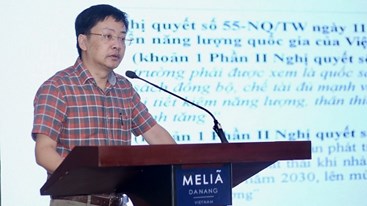
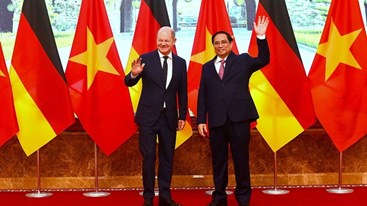
.png?w=367&h=206&mode=crop)
.jpg?w=367&h=206&mode=crop)
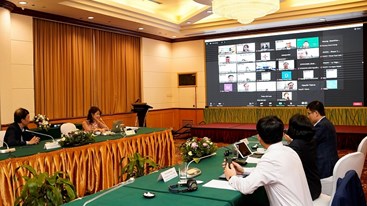
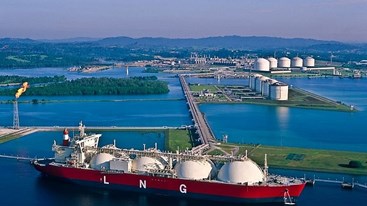
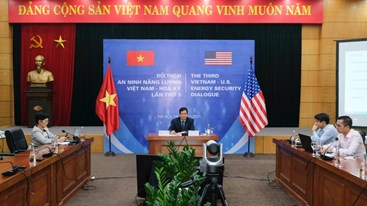
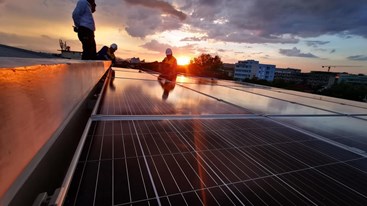
.jpg?w=367&h=206&mode=crop) Energy efficiency and conservation usage is an important aspect of the national energy development strategy
05/03/2024
Energy efficiency and conservation usage is an important aspect of the national energy development strategy
05/03/2024
 Challenges and Opportunities to promote energy efficiency market in Vietnam
Challenges and Opportunities to promote energy efficiency market in Vietnam
 The Ministry of Industry and Trade requests government agencies to coordinate in organizing Earth Hour 2024
The Ministry of Industry and Trade requests government agencies to coordinate in organizing Earth Hour 2024
 Consultation on Energy Efficiency Boiler Catalogue and Wood Drying Guideline
Consultation on Energy Efficiency Boiler Catalogue and Wood Drying Guideline
 Son Ha Co., Ltd, applies energy efficiency and conservation measures
Son Ha Co., Ltd, applies energy efficiency and conservation measures
.png?w=367&h=206&mode=crop) Request for expression of interest - C2.1.13: Capacity Building on energy efficiency policies development
Request for expression of interest - C2.1.13: Capacity Building on energy efficiency policies development
 Phuc Kien Co., Ltd., is effectively implementing energy-saving measures
Phuc Kien Co., Ltd., is effectively implementing energy-saving measures
 Request for expression of interest - C2.1.12: Independent monitoring of safeguards implementation
Request for expression of interest - C2.1.12: Independent monitoring of safeguards implementation